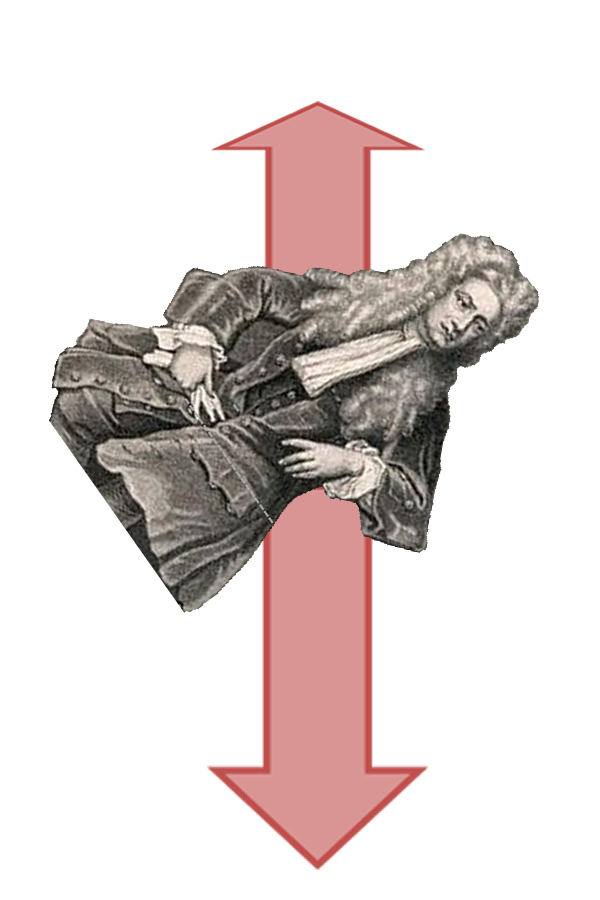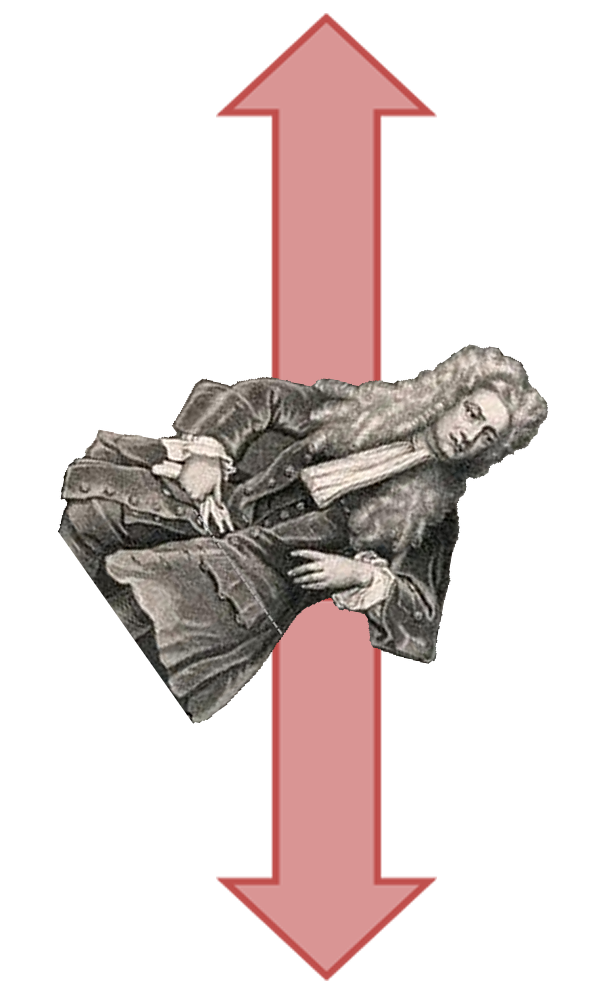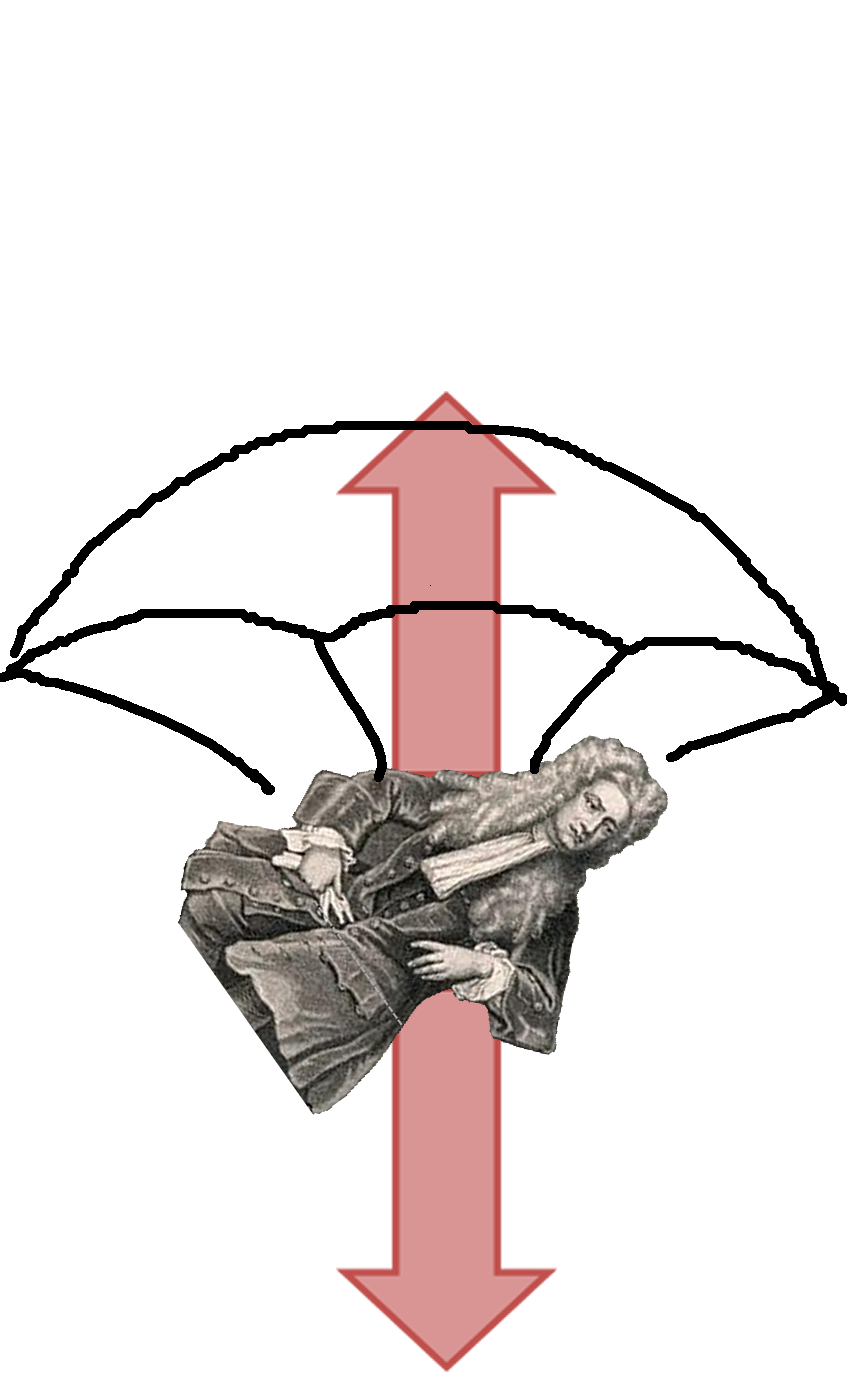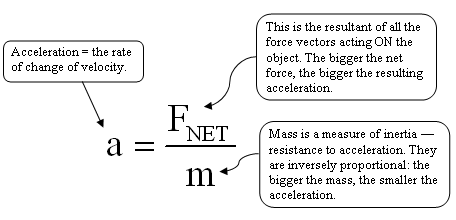Freefall & Skydiving
Freefall Without Air Resistance
If you were to jump from a great height, initially stationary AND if there were no air to create resistance or “drag”, you would accelerate downward at a constant rate. That is, you’d gain speed steadily, falling faster and faster. On Earth, you gain about 10 meters per second of speed for every second you are falling. It’s actually 9.8 m/sec/sec, to be more precise. In barbaric units, that’s gaining 22 miles per hour in speed every second, or zero to 60 mph in 2.7 seconds. Because you are going faster and faster, during each succeeding time interval you cover more and more distance. You can see that in this video (right), where a hammer has been dropped. The hammer is heavy enough that air resistance isn't important. Each blue marker shows where the hammer was at .1-second intervals as it fell. |
Things that are stationary prefer to stay that way, a property we call inertia. And if something that is stationary starts moving, there must be a reason, a force pushing or pulling. So what force is it that makes a skydiver accelerate? The force of gravity, or what most people simply call weight. Here’s Isaac Newton’s 2nd Law of Motion:
The acceleration is proportional to the net force — pull on something harder, it will accelerate faster. That seems reasonable. Pulling with the same force on a more massive object — m is the mass — the less it will accelerate. Dividing by a bigger number gives you a smaller acceleration.
Freefall With Air Resistance
Of course, the Earth does have an atmosphere. That’s good, because we need that for airplanes to work, and also for breathing. When you move through the air, you have to push it out of the way. It pushes back. (This is Newton's 3rd Law of Motion in play.) The force of the air, called air resistance or more simply drag, pushes opposite the motion of the object. With air resistance, FNET is the combination of weight with the drag. Here I am, on the planet Earth, replicating Dave Scott’s experiment. The resistance of the air clearly causes the feather to accelerate less than the hammer. Even sideways, as the feather tilts away from horizontal. The hammer hits the ground before the seventh frame, whereas the feather takes about 15 frames. |
The faster you are moving, the more the air pushes against you. At a speed of about 120 miles per hour, the force of air resistance is enough to hold up a person, if the person is lying flat. In fact, you can go "skydiving" without really skydiving, at a vertical wind tunnel. Here's video of me, at Paraclete XP SkyVenture, in Raeford NC.
Now, let's say you go jump out of an airplane. What happens to you, step-by-step?
| Falling through the atmosphere, starting from rest, at first there is no drag and you accelerate at 10 m/sec/sec. (See diagram to the right.) The downward red arrow is your weight. It doesn’t change, but it causes you to go faster, to accelerate. I did not put velocity arrows on the sketch because it would get too confusing. Only FORCES are on the diagrams. |  |
| As you fall faster, the drag force, which is upwards, steadily increases. The two forces are pushing in opposite directions. however, so as the drag increases, the net force becomes LESS. |  |
At some point the drag equals the weight. Then the net force is ZERO, which means the acceleration is then zero. We call this condition equilibrium. The speed stays constant, a speed we call terminal velocity. So what do you feel when skydiving? In the first few seconds, before air resistance becomes significant, it feels like your stomach is trying to climb out my mouth. What many people call “butterflies”, only much worse. Perhaps you’ve felt it on a roller coaster, or in a car cresting a hill too fast, or an elevator accelerating quickly downward. But that sensation diminishes quickly and, once you reach terminal velocity, your stomach feels perfectly normal, just like when you're on the ground. The only difference being that it’s very, very windy. |
 |
| Bigger, wider objects hit more air and experience more air resistance, so an object’s shape helps determine its terminal velocity. | |
| For the feather in the video above, it’s about 1.6 m/sec, or 3½ miles per hour. The hammer would reach terminal velocity eventually, but it would have to be going much faster in order for air resistance to equal its weight. I don’t know exactly how fast, but for a falling human being, it’s about 120 miles per hour. | |
| When the parachute opens, the surface area suddenly increases dramatically, causing the drag to increase dramatically. You feel a dramatic jerk upwards. The net force is upwards, and this causes your downward motion to slow. |  |
| As you slow down the drag decreases, until once again the drag equals your weight. You're again at terminal velocity, only it’s about 20 miles per hour instead of 120. At this speed you can land safely. |  |
Here's another video, by Connor, explaining terminal velocity with help from secret agents Maxwell Smart and 99.
These days, most new skydivers start with tandem jumps, strapped to an instructor. Here's a video showing my first skydive. (Video footage by Chris Davis, Quantum Leap Photography, Inc.)
When you jump out of an airplane, be sure you have a parachute. If you don't, remember what James Bond did during the opening of Moonraker.
NASA uses an aircraft flying parabolic maneuvers to produce intervals of apparent weightlessness inside. The aircraft, affectionately known as the “Weightless Wonder”, is used by NASA to train astronauts, to test equipment and procedures to be used on the Space Station and Space Shuttle, and for scientific experiments. The aircraft climbs at a steep angle and then arcs over in a parabolic trajectory to begin an equally steep dive. During the top portion of each parabola, people and objects inside the aircraft float about the cabin as if gravity has been turned off, a condition known as “zero-g” lasting approximately 20 seconds. The aircraft then pulls out of the dive and begins climbing again to repeat the procedure. During the pullout at the bottom, everything in the aircraft is plastered to the floor, called hypergravity or 2g, seemingly weighing twice as much as normal. The aircraft has seats only at the back (for takeoff and landing) and the interior walls are padded to prevent injury.
The aircraft's unofficial nickname is the "Vomit Comet". You can read about it in this description by Mike Mullane, a NASA astronaut.
Activities & Practice
1. The atmosphere of Venus is much denser than the Earth’s atmosphere. The strength of Venus’ gravitational field, g, is very similar to Earth’s. (a) If you were to travel to Venus, would you expect your weight to be greater than on Earth, less than on Earth, or about the same as on Earth. (b) While on your Venusian vacation, you go skydiving. Would you expect your terminal velocity to be greater than, less than, or about the same as it is here on Earth? |
